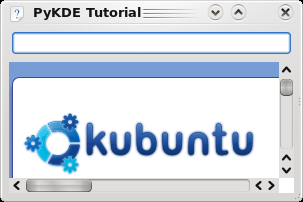Languages/Python/PyKDE WebKit Tutorial/Part6: Difference between revisions
(New page: Now we can add our address bar. After creating the layout add: <code python> self.addressBar = QLineEdit(self.widget) layout.addWidget(self.addressBar) </code> A ''QLine...) |
Neverendingo (talk | contribs) m (Text replace - "</code>" to "</syntaxhighlight>") |
||
| (4 intermediate revisions by 2 users not shown) | |||
| Line 3: | Line 3: | ||
After creating the layout add: | After creating the layout add: | ||
< | <syntaxhighlight lang="python"> | ||
self.addressBar = QLineEdit(self.widget) | self.addressBar = QLineEdit(self.widget) | ||
layout.addWidget(self.addressBar) | layout.addWidget(self.addressBar) | ||
</ | </syntaxhighlight> | ||
A ''QLineEdit'' is a widget into which you can type a line of text. | A ''QLineEdit'' is a widget into which you can type a line of text. | ||
| Line 17: | Line 17: | ||
[[Development/Languages/Python/PyKDE_WebKit_Tutorial/ | [[Development/Languages/Python/PyKDE_WebKit_Tutorial/Part5|« Back to Part 5]] | [[Development/Languages/Python/PyKDE_WebKit_Tutorial/Part7|On to Part 7 »]] | ||
[[Category:Python]] | |||
Revision as of 20:50, 29 June 2011
Now we can add our address bar.
After creating the layout add:
self.addressBar = QLineEdit(self.widget)
layout.addWidget(self.addressBar)
A QLineEdit is a widget into which you can type a line of text.
See the full code.
The programme with a line edit for an address bar.

